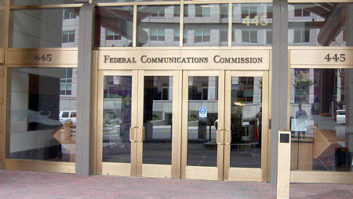
Richard Rudman. ‘Most protective action warnings fail to get to the people who need them because they were never issued.’ I must respectfully disagree with Warren Shulz’s conclusion that we should disconnect EAS from public broadcasting (“It’s Broke; Stop Trying to Fix It,” June 5 issue). However, Warren is correct that outmoded legacy EBS and EAS policies weigh down classic EAS and make it less than effective as a warning tool. Recent EAS changes have not fixed this.
My question to Warren: When emergencies disrupt all other means of mass communication, how will the government be able tell us what protective actions the public must take to help stabilize the national emergency condition? Arguably, networks carrying a national press conference are the best, fastest and most complete way for federal leadership to communicate with us; but what if the networks are not able to do it?
FEMA created the Primary Entry Point network using a small number of AM radio stations, with the goal of being able to reach a potential audience of 90 percent of the tuned-in public. As we now know, both day and night coverage for original PEP stations could never could come close to that goal.
However, FEMA devised PEP to work when it would be impossible to call a press conference. The broadcast engineering advisory group for PEP made sure those original few stations could do the job if the unthinkable ever really happened. FEMA has now built and commissioned a number of new PEP outlets and PEP network paths for the day we can only hope will never come.
Broadcasting can and does deliver warnings when other means fail. Broadcasting can deliver emergency public information, or “EPI,” in “long form,” as opposed to WEA, Twitter and Nixle — all short-form text messaging systems with little to no voice transmission capability; all very vulnerable to cell and Internet network impairment and disruption.
When utility power, cable and Internet services are crippled by the very emergencies they are supposed to inform us about, broadcasting has proven resilient. This resilience extends to reception since almost everyone with a vehicle still has a dashboard radio.
RANGE OF SYSTEMS
So how can we fix parts of EAS that are broken or were never built?
In 2002, a small group of warning subject experts formed the Partnership for Public Warning Inc. to address major deficiencies in all warning systems and policies of the United States.
The PPW wrote several reports. One report called for a national warning strategy — something still does not exist.
Another report described the Common Alerting Protocol, the open, international, non-proprietary standard for origination of warnings by the emergency management community through a wide range of warning systems.
A CAP message, as envisioned by the PPW, can convey specific protective actions to help save more lives and property that far surpass what the original EAS SAME protocol could deliver over all available warning systems including the broadcast path.
CAP EAS messaging is still saddled with single-point failure, an unfortunate legacy of EBS that needs to go.
CAP also has much better built-in protections against “spoofing,” a key deficiency that Warren rightly points out in legacy EAS. Local and state warnings should be delivered to all broadcast entry points using what Washington State EAS calls local relay networks. No more daisy chains!
The mastodon in the room when we talk about all public warnings is that most protective action warnings fail to get to the people who need them because they were never issued. There is a lot of research behind my statement, available on Colorado State’s Center for Disaster and Risk Analysis website.
My way to fix this is to convince more emergency managers that the public warning tool is a valuable resource in the same sense that fire strike teams and emergency food and water are response resources. I have presented this idea to FEMA with some hope that this concept will become part of basic emergency management training in the National Incident Management System.
INDUSTRY COMMITMENT?
The other side of this issue is that we are losing what used to be a deep commitment by licensees to deliver warnings to the public, a pledge that was once an essential element of broadcasting public service. Maybe recent large-scale emergencies will convince those licensees that they are wrong?
One more thing. All end-user warning devices, including radios and TV sets, should have direct CAP recognition built in, and broadcast receivers (radio and TV) should store and display warnings and other emergency messages, so they do not have to appear in the program stream.
“Sunsetting” classic EAS and going to full-on CAP EAS, coupled with CAP-aware “warning appliances,” are goals we should recommend to the FCC, FEMA, the Weather Service and the consumer electronics industry to help alleviate the national EAS deficiencies that Warren rightly decries. These goals can strengthen our ability to give the public timely protective actions using as many devices as possible via as many warning entry points as possible.
We should not care how people learn they are in danger; we must care if we are not doing everything possible to warn them of danger, including preserving and strengthening the broadcast entry point.
Richard Rudman is vice chair of the California EAS State Emergency Committee and a core member of the Broadcast Warning Working Group. Tune in for more of this discussion at the EAS Forum,eas.radiolists.net.











